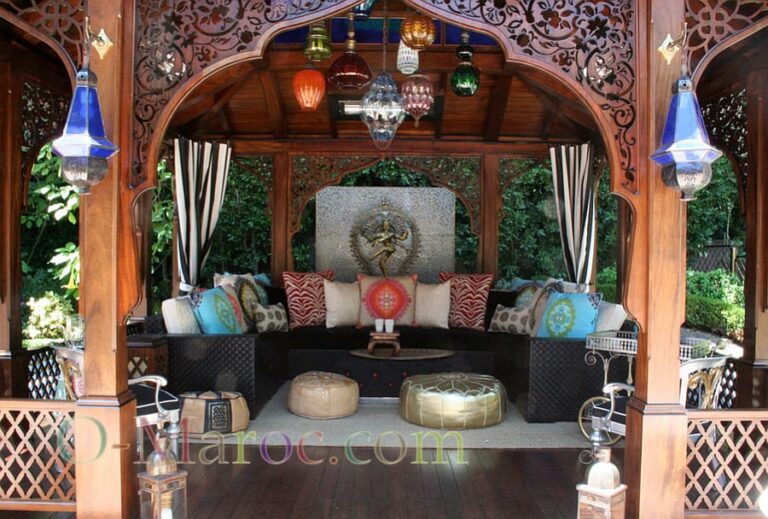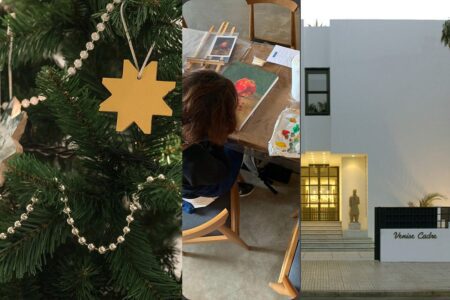Rich and luxurious, the Moroccan style is also very well exported and gives a touch of exoticism and comfort to foreign homes. Its bold colours, its particular shapes and its refined details have particularly seduced many European and North American interior decorators.
While remaining faithful to the codes of Moroccan decoration, they transform them and mix them with other influences.
Here are twelve key elements that you can use to add warmth and style to your interior without making it a faithful recreation of a Moroccan house.
Architectural details
Traditional Moroccan architecture has been formed through centuries of cultural and religious influences, Berber, Arab, Muslim… The richly decorated arches over the doors and windows, the niches and their abstract and geometric ornamentation are one of the most recognisable elements of the Moroccan style.
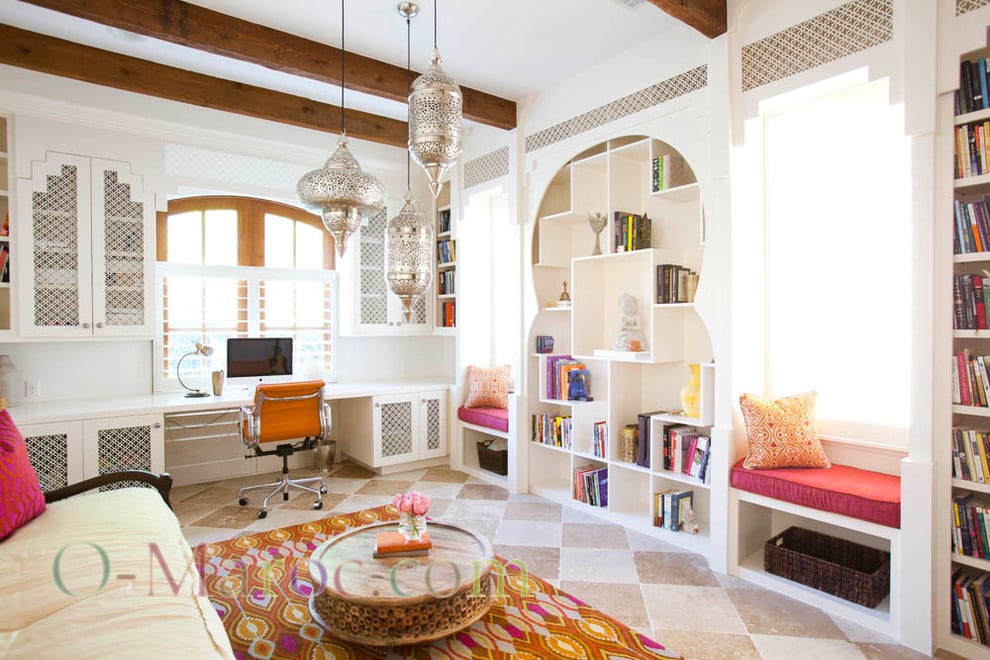
The cupboard doors and the panels above this Moroccan desk are made of delicate moucharabiehs painted in white, the floor covered with a large contrasting checkerboard tile.
To imitate this in your home, you can use large mesh screens instead of moucharabiehs, which you can paint. You can also paint the floor with a special resin (waxed concrete works very well). Finally, panels of medium wood cut in a round shape with a jigsaw and nailed to the uprights of the shelves will finish the transformation of your room.
Interior patios
Traditional Moroccan houses were built to protect privacy: no courtyard or garden outside the walls, but a square plan around a central courtyard, often with a well or fountain.
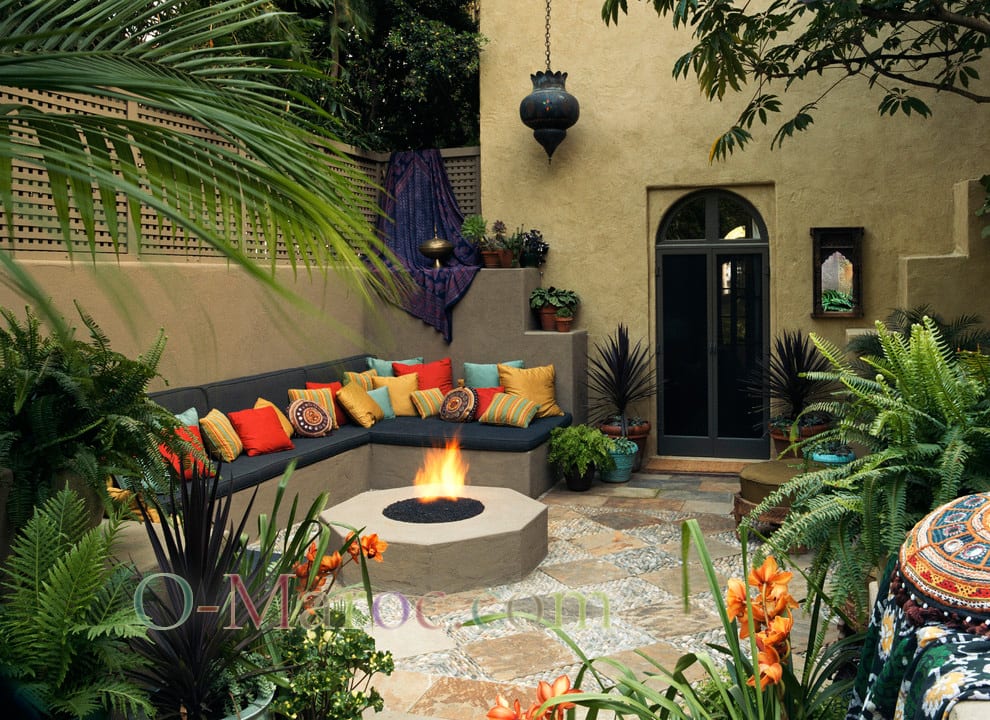
This westernised version has taken on the bright colours, the comfy sofas along the walls, the arched door, the mirror in its carved wooden frame and a wall covering that mimics tadelakt and is presumably waxed concrete.
To Moroccanise your terrace without breaking the bank, try organising it with four beds or groups of green plants and a small central fountain. Add large earthen pots, why not painted in bright colours like in Majorelle? Try to plant palm trees or orange trees, even if you have to protect them or bring them inside in winter. Add a few wrought iron lanterns, and scatter some very colourful cushions around.
Painted woodworks
In Morocco, wooden doors and ceilings are often richly decorated, engraved and covered entirely with paint. Until recently, natural dyes were used, based on saffron, mint, madder… expensive, they are particularly resistant, still bright and colourful after a century or two! The motifs are often abstract, and also include floral elements. The same decorations are found on wooden objects, small tables, boxes, frames…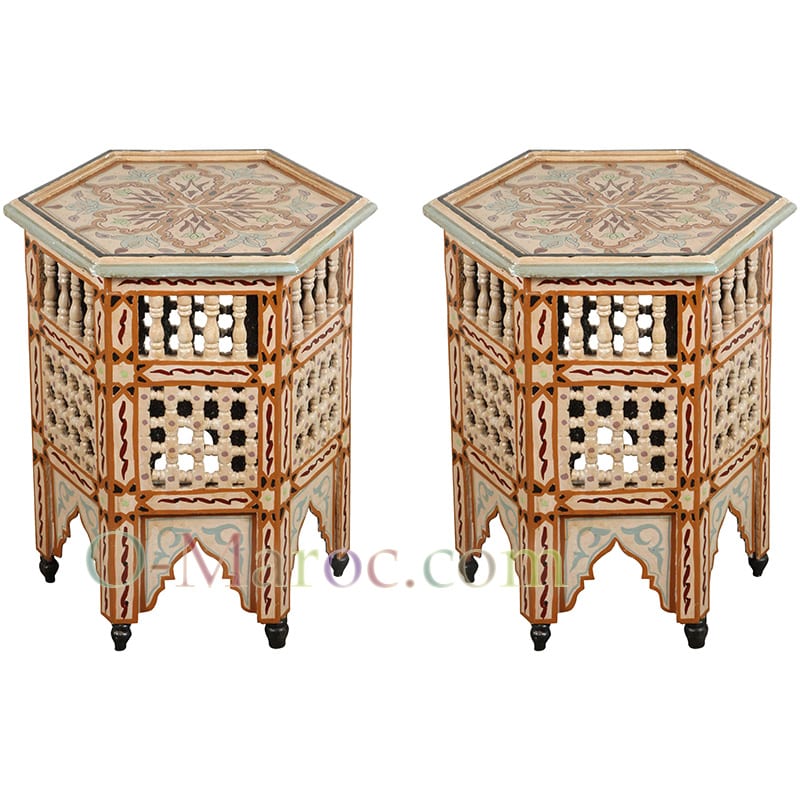
A pair of painted wooden coffee tables, delicately crafted. To be used without moderation
It’s easy to set up at home: a few brushes, a template found on the internet, draw the patterns with a pencil before you start. Start with a small area, a tray for example, before you get more confident and go for your walls!
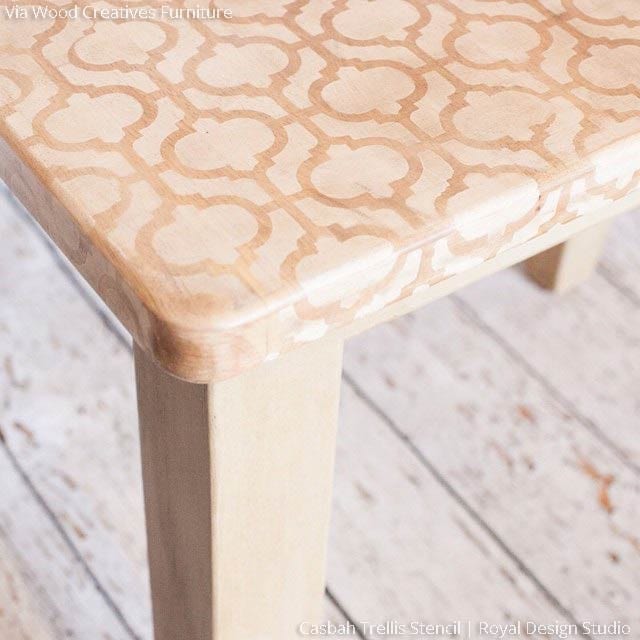
Bright and intense colours
Moroccans, especially Berbers, love colours. All shades of red, blue, gold and yellow are particularly popular. Every year new shades become fashionable. At the moment, for example, the combination of turquoise blue and brown, floral patterns… Walls are often painted in intense orange or red, when they are not decorated with zelliges. Blue is also much sought after, it is said to bring good luck…
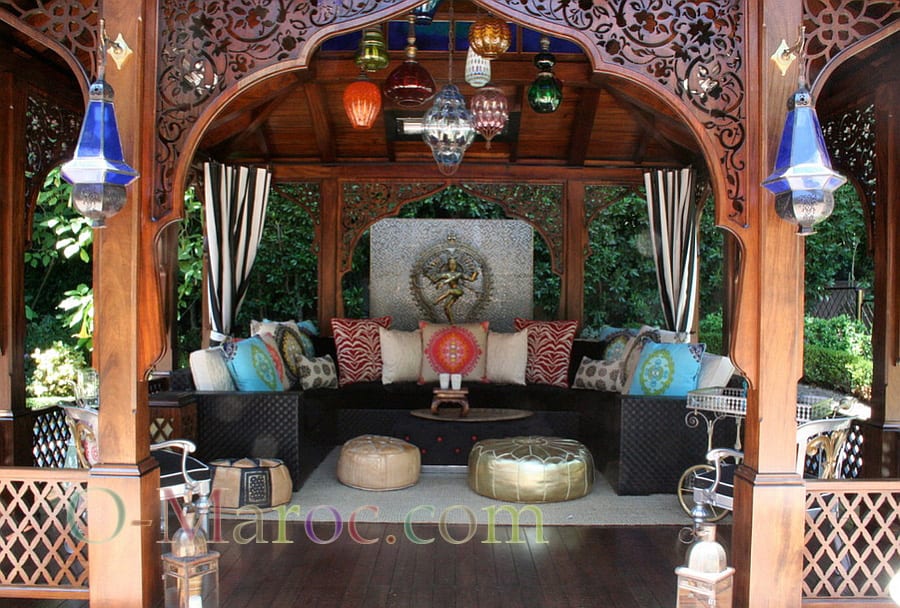
To do the same in your home, remember that Moroccan rooms are large, high-ceilinged, and intense colour tends to shrink a room. Leave one or perhaps two walls white, or paint halfway up, to imitate the effect of zelliges. Fabrics can suffice, curtains, sofa throws, rugs and cushions add colour in a less definitive way than paint.
Luxuriously worked furniture
Delicately carved furniture and luxuriously upholstered seats are the basic elements of Moroccan interiors. Carved seats, chests, coffee tables and sideboards often contrast with richly upholstered couches, poufs or even cushions on the floor.
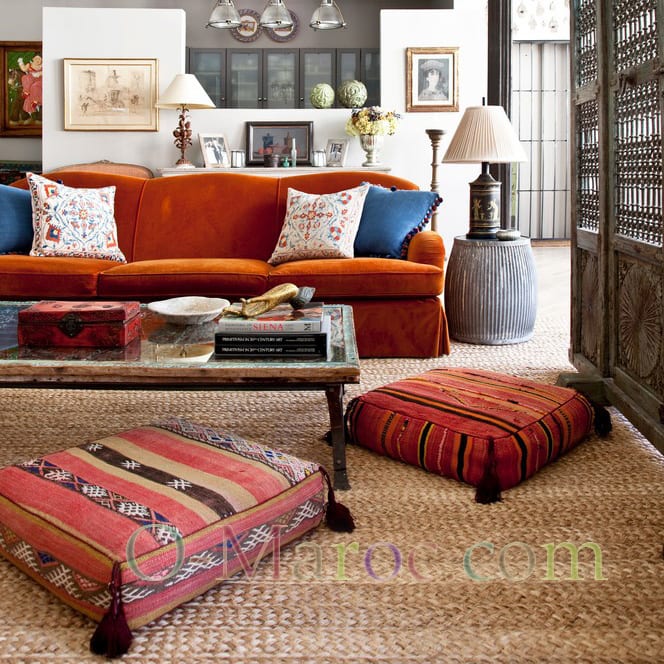
You can introduce these elements without blowing your budget. For example, you can put a large hammered metal tray on a table, buy some Moroccan poufs or cushions, they are usually cheap. Carved elements can be introduced into a room that is already furnished with wooden sconces, for example.
Moroccan rugs
Moroccan carpets are known all over the world. These carpets were used as bedding, blankets or even horse saddles. Their designs were abstract and geometric with very colourful or neutral colour palettes.
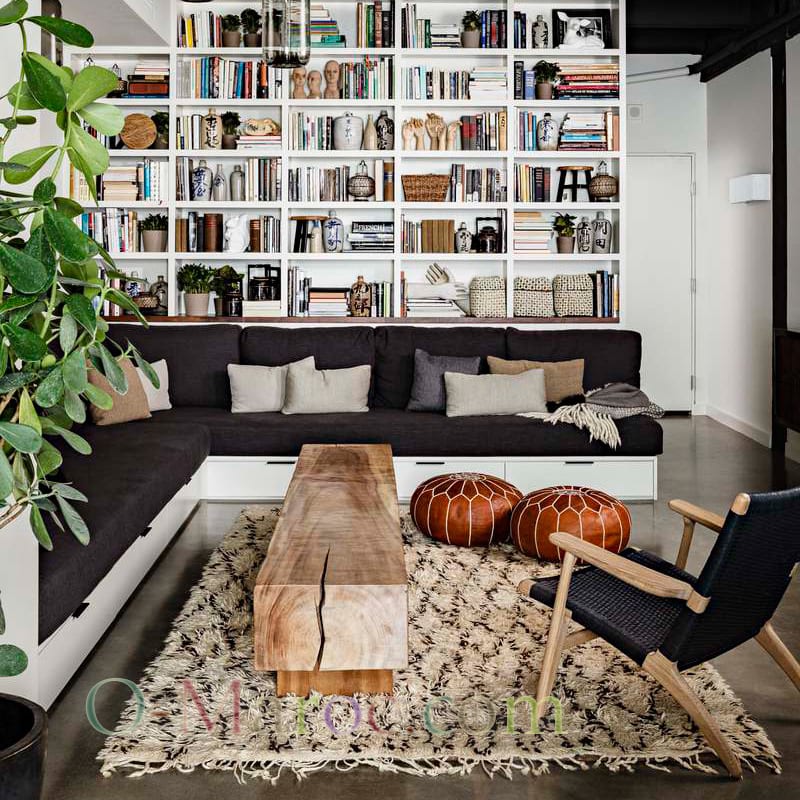
Authentic Moroccan rugs, contemporary or vintage, can cost a fortune. There are also cheaper, reproduction ones, and if you’re a do-it-yourselfer, you can recreate these designs by painting monochrome rugs. This is easier to do on sisal or jute rugs, but with skill you can recreate a Beni warain on a white rug. (Here is a tutorial on how to paint a sisal rug)
The fabrics
Moroccan fabrics, both silks and gauzes, can be used and layered to separate different spaces in a room, as drapes or to protect furniture.
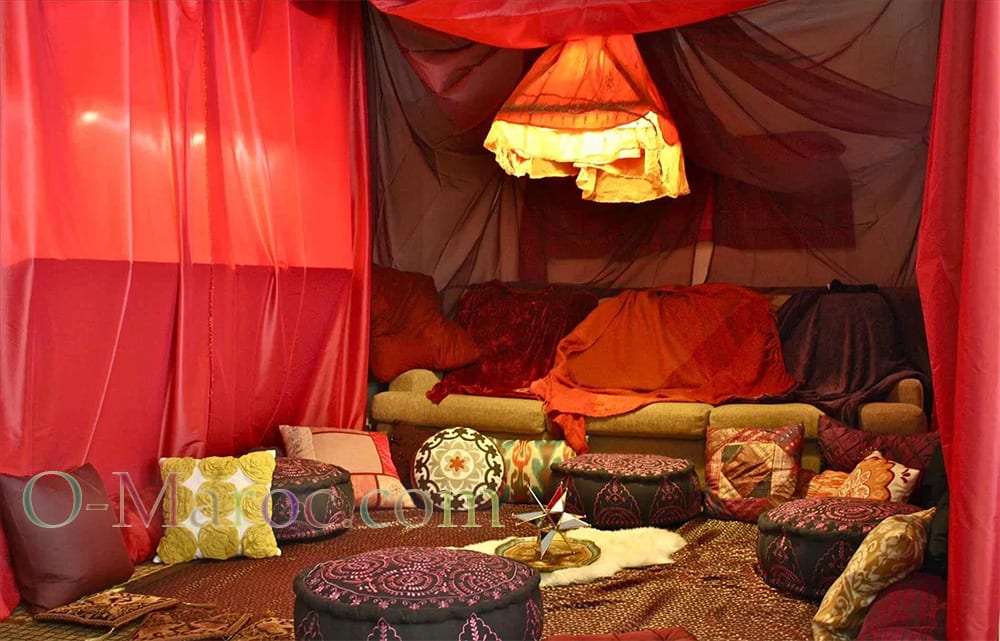
It’s easy: visit your favourite fabric store regularly and look for fabrics with very colourful, intricate patterns in warm tones if possible, or fabrics that are a little transparent like gauze. Mix patterns and colours to achieve that sought-after Moroccan look. Fabrics can be used to cover pillows, large floor cushions, or as door hangings.
Zelliges and tiles
Moroccan tiles, known as zelliges, come in a variety of highly codified geometric shapes and colours. They decorate floors, walls, sometimes halfway up, sometimes up to the ceiling, frame doors, and cover fountains and flowerbeds in patios.
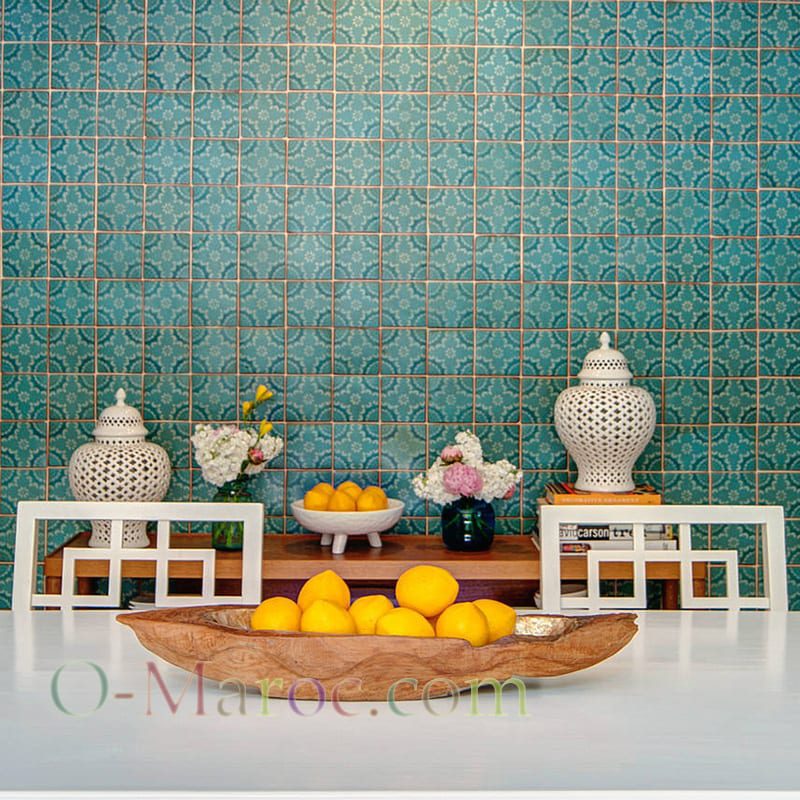
Moroccan patterned tiles are now easily available. Their classic yet imposing looks work well in both traditional and modern flat settings. You can use a few to accent a fireplace or create a pattern on a floor. If you’re on a really tight budget, consider vinyl or resin-like paints with stencils.
Lighting
Moroccan chandeliers are one of the most instantly recognisable elements of Moroccan decor. In the shape of lanterns, worked in metals such as copper, brass, silver or wrought iron, they can be found in all sizes. These imposing lights diffuse light and draw fascinating shadows on the walls.
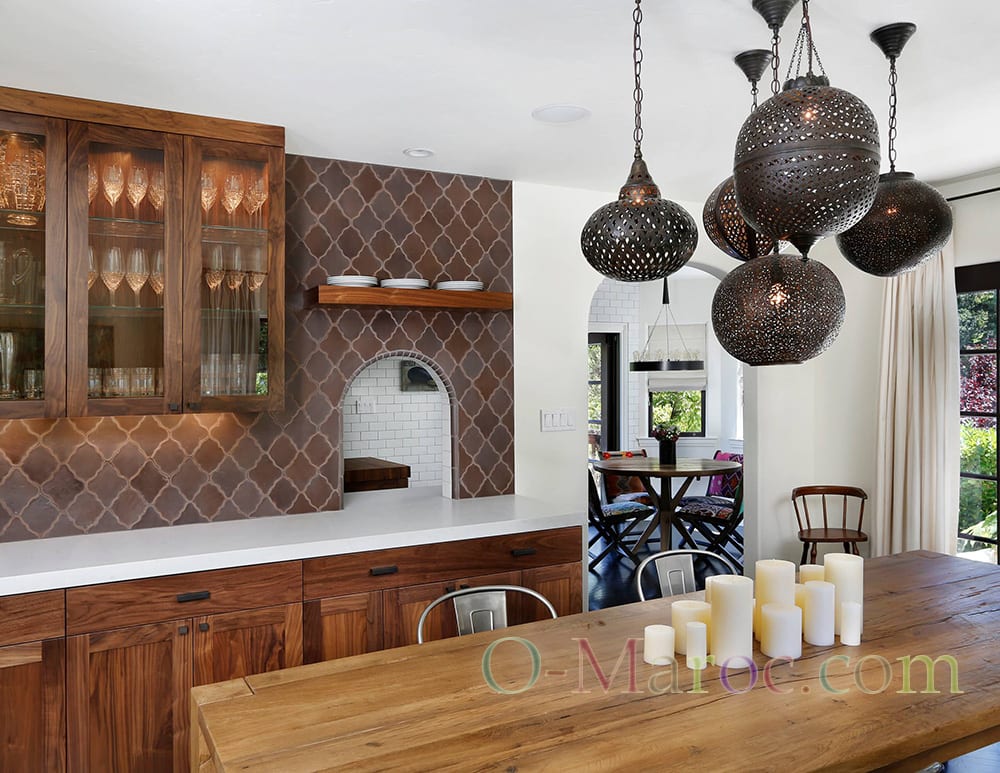
There is a wide choice of lanterns. You can put small ones on your balcony or in your flowers. For the ceiling, instead of taking a very large chandelier (some, in Morocco, are higher than a man, suspended in the central patio of a large riad of several floors…), make a set with three or four different suspensions, matched in shape and colour.
Ironwork and brasswork
The art of working with metal has been handed down from generation to generation, and in Morocco they produce beautiful metal objects with complex decorations that are engraved, chiselled or hammered. Mirror frames, vases, lighting fixtures, teapots and trays are just a few examples of the handcrafted objects that adorn every Moroccan interior.
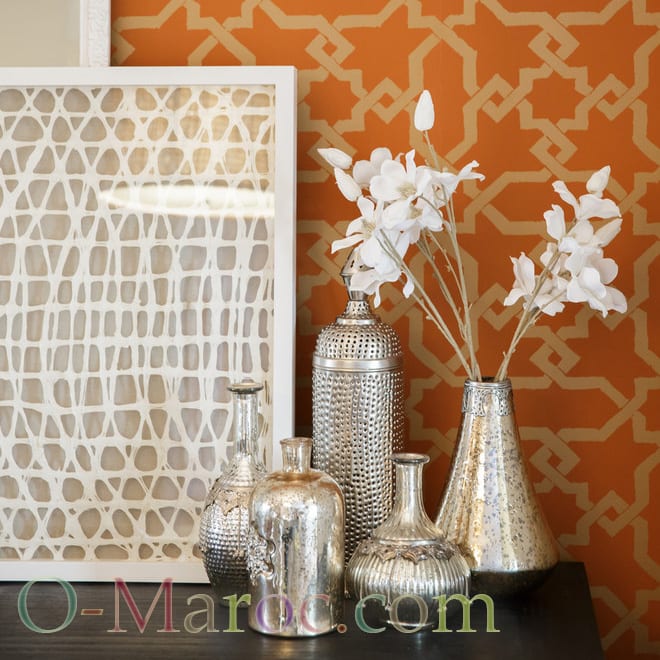
In your home, don’t limit Moroccan accessories to the main room. Large bowls are a perfect decoration for the bathroom or kitchen, small mirrors can be placed near the front door, in a hallway, on a table in the bedroom. As the Moroccans do, place a chiselled metal tray on a low tripod to make a coffee table.
Leathers
The word “maroquinerie” comes from the Moroccan word for leather. In the 18th century, maroquin was a high quality leather imported from Morocco. Moroccan leathers are produced in Fez and Marrakech, in large artisanal tanneries that preserve the traditional know-how. The leathers are often decorated, stamped or painted with geometric patterns.
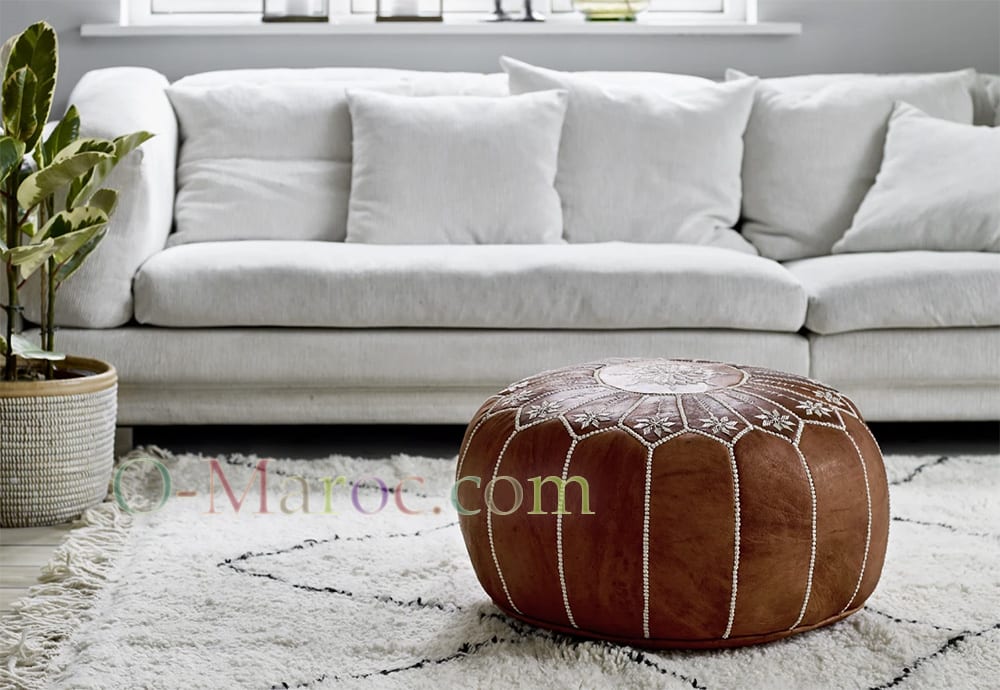
If you haven’t brought home a hide from the tanneries, you can find leather poufs at all prices. Small accessories, such as slippers, can be hung on the wall as decoration.
Tadelakt
Tadelakt is a very special technique, a coloured, water-based lime coating that seals walls and floors. Used in the past in cisterns and bathrooms, it has conquered all rooms, thanks to its beauty, its smooth and soft surface with subtle variations of colours. In living rooms and bedrooms, the texture is often played with, by scraping away some of it to reveal rough patterns.
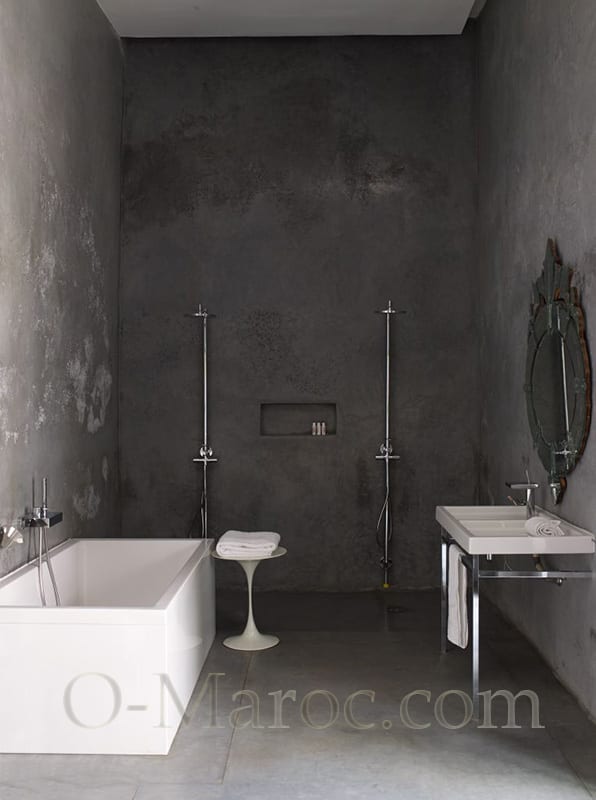
The true tadelakt is difficult to export. It is a very particular technique, which requires a real know-how. On the other hand, a well applied waxed concrete can give the same type of result, with the softness and the waterproofness of the support.
 A typo or syntax error? You can select the text and hit Ctrl+Enter to send us a message. Thank you! If this post interested you, maybe you can also leave a comment. We'd love to exchange with you !
A typo or syntax error? You can select the text and hit Ctrl+Enter to send us a message. Thank you! If this post interested you, maybe you can also leave a comment. We'd love to exchange with you !

